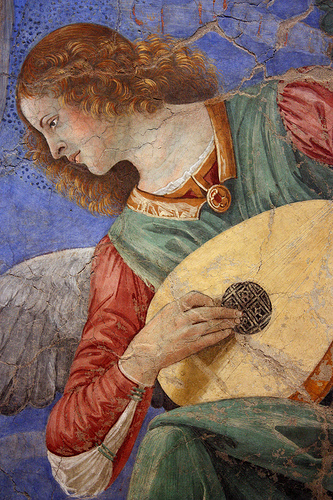Music of the Baroque delivers a polished if expressively cool Christmas program

The ceaseless succession of holiday concerts can make it difficult for the casual observer to distinguish the substantial musical events from the ephemeral.
Music of the Baroque’s brass and choral program always remains a reliable seasonal touchstone, offering an intelligent, deftly arranged lineup of early, Renaissance and Baroque music. This year’s concerts opened Thursday night in River Forest, and run through Sunday in Chicago and Northbrook.
Most interest at Thursday’s opening at Grace Lutheran Church centered on William Jon Gray, the ensemble’s new chorus director, who was making his official MOB podium debut at these concerts. (Gray took over on extremely short notice for the season-opening Purcell program in September when music director Jane Glover fell ill.)
It’s clear that in his first months on the job Gray has made a fast improvement in upgrading the quality of the MOB chorus, which has been a variable affair in recent seasons. That was most manifest in the quite glorious ensemble singing in the Music of the Baroque performances of Bach’s Christmas Oratorio just a fortnight ago
So too on Thursday, the chorus was prepared, well blended, and largely polished in an array of seasonal vocal music, which ranged from standards like Prateorius’ In dulci jubilo to less-often-heard items like Bassano’s Hodie Christus natus est, and Schutz’s Psalm 150. In addition to providing most of the brass interludes, as usual, Giovanni Gabrieli was also represented by two vocal works, Audite principes and O magnum mysterium.
Two of the most successful works of the evening came from Monteverdi with his Exultent caeli and, especially the quasi-operatic duet Venite, siccientes, ad aquas Domini with soprano Amy Conn and mezzo Nina Heebink blending nicely in this lovely setting. And the traditional bell-accompanied finale with the men and women ascending to opposing choir lofts for an antiphonal performance of the solemn tone Te Deum laudamus, made its sure impact.
Still for all the scrupulous musicianship on display, there was a certain feeling of blandness and a detached, cool expression throughout the program. Too many of the vocal selections sounded alike, with brisk tempos, firmly pointed accents and a lack of expressive nuance and dynamic shading.
Also, for a program of devotional music there was little sense of solace or spirituality in performances, which at times verged on the didactic. Too much of the singing stayed on the loud side with even the encore of Praetorius’s Es is Ros entsprungen offering little hush or inner glow.
No complaints about the brass playing, which continues to be terrific this season with trumpeters Barbara Butler and Charles Geyer leading the section in brilliant clarion performances of music by Gabrieli, Hassler and Vierdanck.
Even with the plonky harpsichord played by Gray, Barbara Haffner’s exquisite musicianship in the Adagio from Bach’s Sonata in G minor, BWV 1029, was a highlight of the evening. Her sensitive, nuanced and eloquent cello playing showed the kind of expressive depth that was too often missing in the choral works Thursday night.
The program will be repeated 8 p.m. Friday at St. Michael’s Church in Chicago’s Old Town; and 3 and 8 p.m. Saturday and 3 p.m. Sunday at Divine Word Chapel in Northbrook. baroque.org; 312-551-1414.
Posted in Performances




